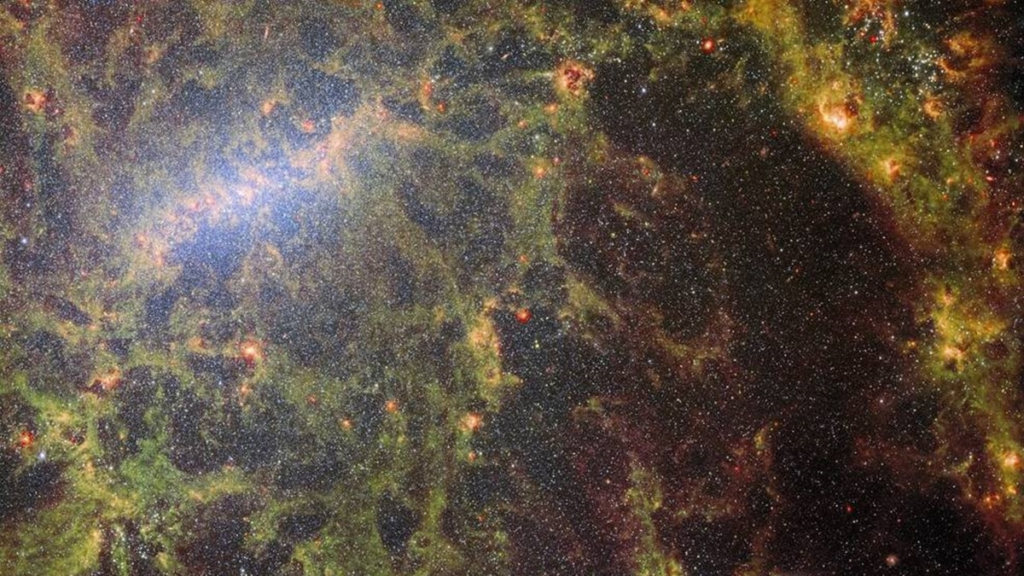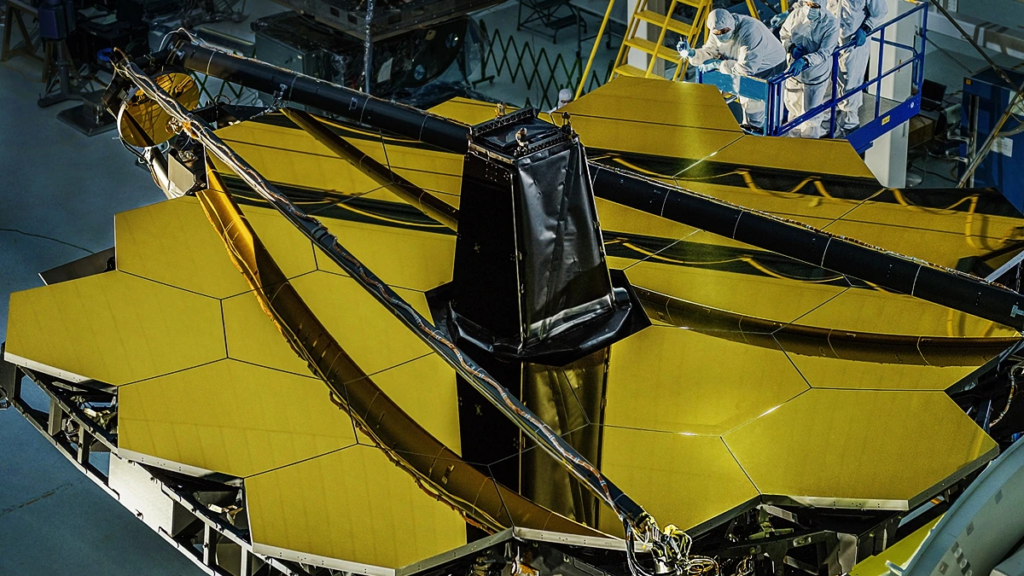The James Webb Space Telescope saw faraway galaxies produce new suns.
It examined NGC 5068’s dust and brilliant star cluster threads.
The world’s most powerful observatory saw the galaxy’s brilliant star-forming regions 20 million light years distant. A mission to study star formation in neighboring galaxies included the observation.
JWST can examine star formation in unparalleled detail due to its superior capabilities.

The star birth has been seen in the galaxy NGC 5068
To learn how galaxies function, observations are made. NASA said star formation underlies several astronomical studies, from the mechanics of thin plasma between stars to the growth of galaxies.
According to NASA, Webb collected images of 19 nearby star-forming galaxies that astronomers could combine with Hubble images of 10,000 star clusters, VLT spectroscopic mapping of 20,000 star-forming emission nebulae, and ALMA observations of 12,000 dark, dense molecular clouds.
Webb data is helping astronomers understand how galaxies generate stars.

Located about 20 million light years away from Earth
Webb can see through the gas and dust around nascent stars, making it ideal for studying star formation.
The JWST’s infrared observations help it investigate star formation. Infrared light penetrates interstellar dust, revealing star-forming areas. This is important because dusty settings hinder visible light observations.
JWST’s split mirror provides a bigger collecting area than prior space telescopes. This greater light-gathering ability lets it detect weak infrared signals from young stars.
Stars and planets are born in opaque clouds of gas and dust. Astronomers saw star formation straight through NGC 5068’s massive dust clouds using the Mid-Infrared Instrument and NIRCam.
